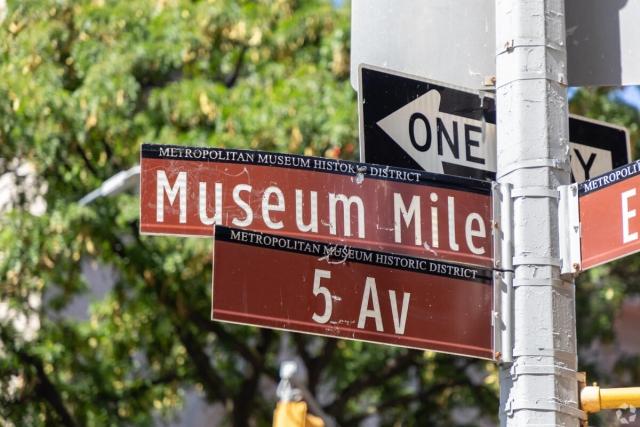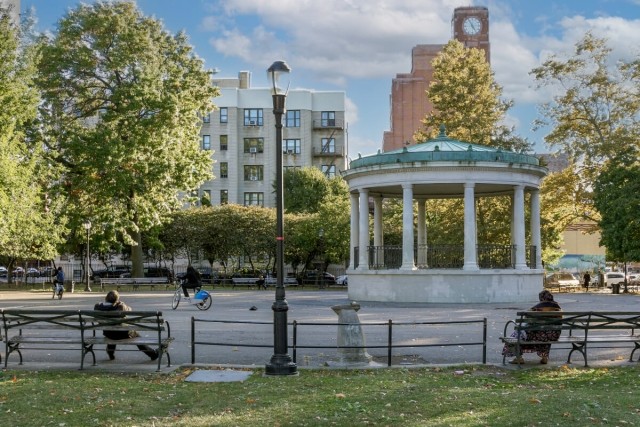With almost 9 million residents, New York City is by far the most populated city in the U.S. This high population density has created a unique rental market that thrives on lofts and studio apartments. Despite this, there are several mansions within city limits that offer a peek into the heights of New York City luxury.
What Is a Mansion?
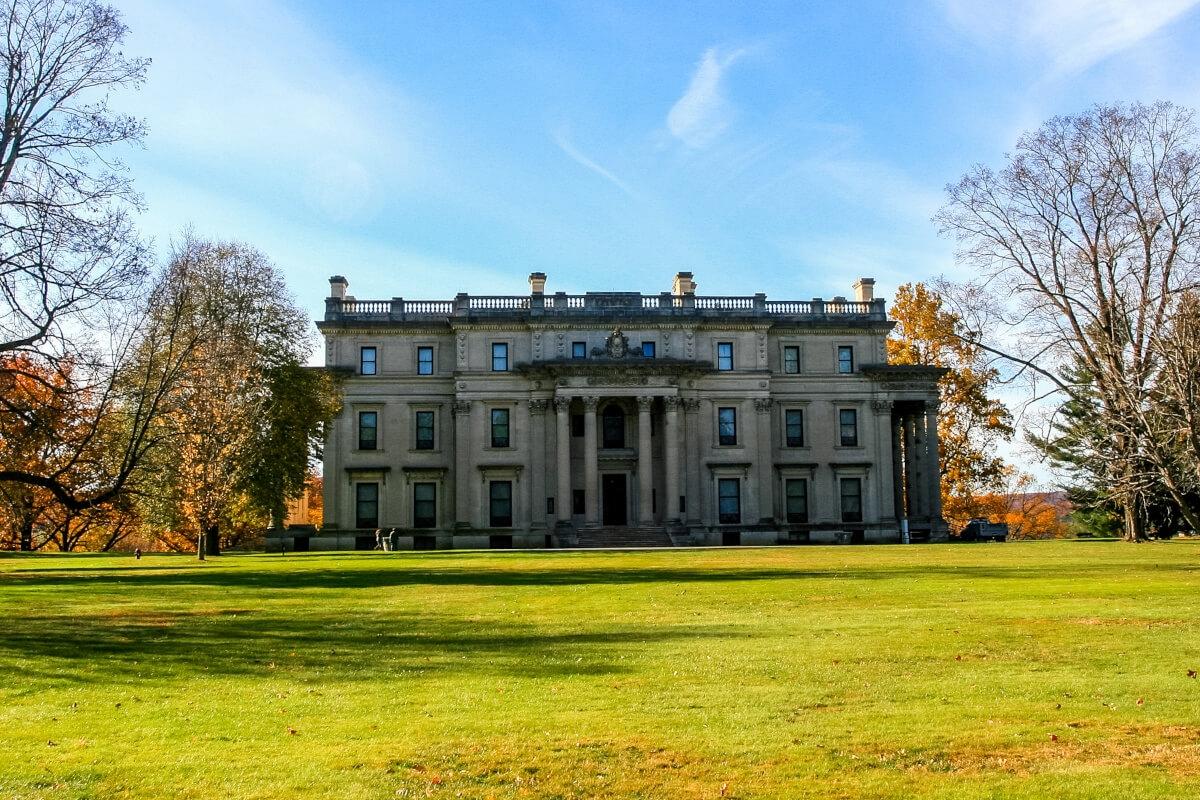
A mansion is a large, luxury home that features multiple bedrooms, bathrooms, and entertainment areas. There’s no standard definition of a mansion, but most mansions sit on a large plot of land and are designed in a distinct architectural style.
According to Forbes, most real estate specialists today consider a mansion to be a home at least 8,000 square feet in size. That’s 13.4 times the average New York City rental size of 597 square feet.
How are there mansions in NYC?
Because the Big Apple is so densely populated, most properties—both for rent and for sale—are located within multi-family buildings. So…how are there such massive single-family homes in the middle of the most populated city in the U.S.?
Many of the mansions still standing in New York City are from the Gilded Age and have been repurposed as museums, with the architecture and design as part of the exhibit. These former residences are on the National Register of Historic Places, qualifying them for preservation by the National Park Service and New York State Historic Preservation Office.
NYC “mansion tax”
Taxes are another reason why there aren’t many mansion residences in the Big Apple. According to the New York Department of Taxation and Finance, NYC mansions face an additional transfer tax upon purchase known as the “mansion tax.” The mansion tax is a tiered system, beginning at 1% for residences priced at $1 million and going up to 3.9% for residences priced at $25 million or more. The mansion tax is a one-time fee the buyer pays upon purchasing the mansion. Between the mansion tax and annual property taxes, the numbers can rack up quickly.
However, nonprofit organizations like museums are tax-exempt. Turning these historic homes into museums preserves the stunning architecture and protects these mansions from property devaluation due to high taxes.
7 Most Beautiful Mansions in NYC
Carnegie Mansion
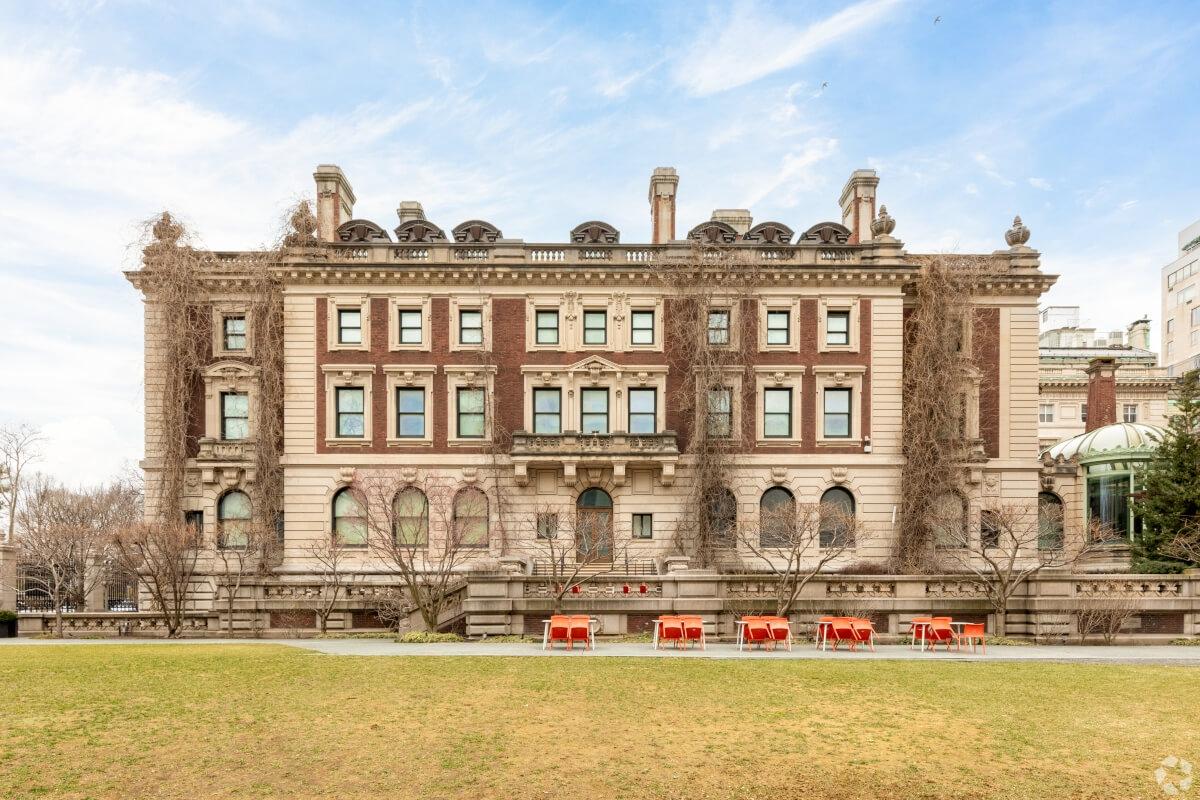
Size: 52,300 square feet
Location: Carnegie Hill
Current purpose: The Jewish Museum
Felix M. Warburg, a Jewish financier from Germany, commissioned this chateau from C.P.H. Gilbert, an architect known for his French Gothic and Beaux-Arts designs. The house became the family home of Warburg and his wife, Frieda, despite their family’s concerns that the mansion’s lavishness would inspire anti-Semitism.
Frieda remained in the house for several years after Felix died in 1937. In 1944, she donated the house to the Jewish Theological Seminary of America for use as a museum, and the Jewish Museum opened to the public in 1948. In life, Felix and Frieda sought to give back to the Jewish community, and their legacy lives on in their family home.
Otto H. Kahn House
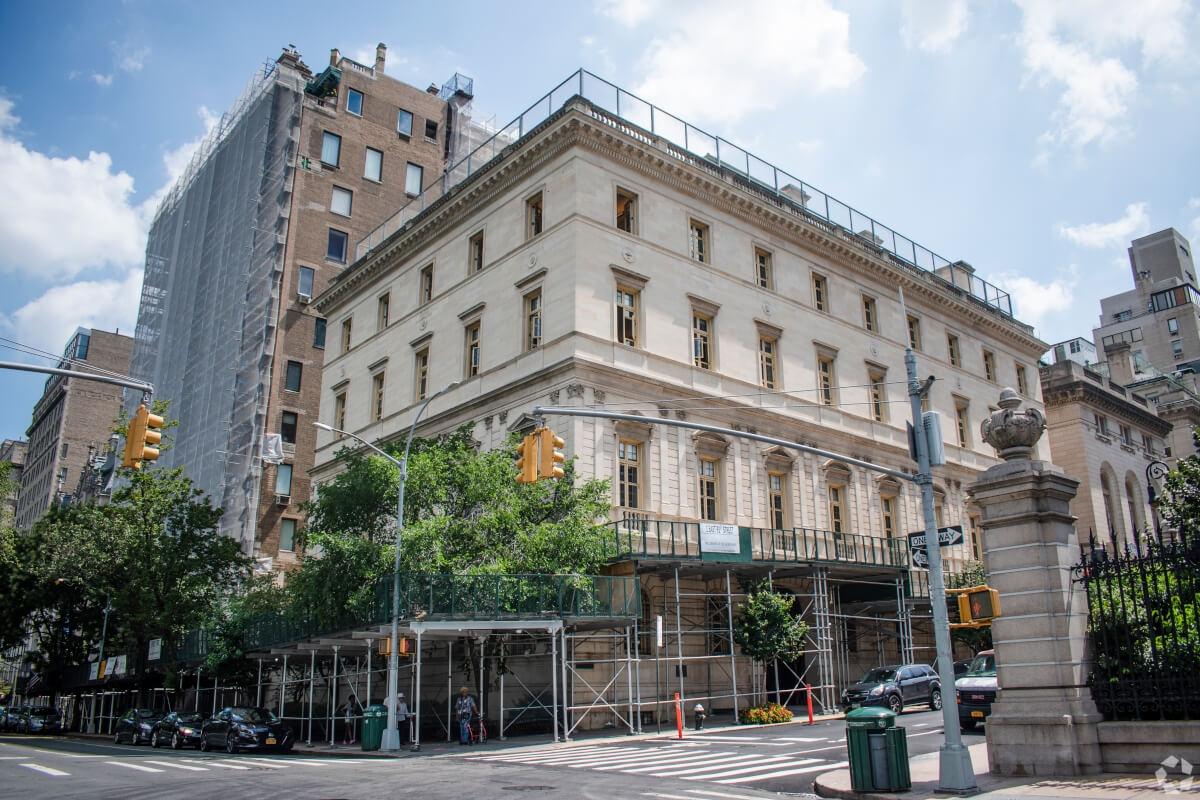
Size: 50,000 square feet
Location: Carnegie Hill
Current purpose: Convent of the Sacred Heart
Just across the street from Carnegie Mansion, this chateau is another C.P.H. Gilbert work. Otto H. Kahn, a German-Jewish banker, commissioned this mansion in 1913 as his second residence—his first being Oheka Castle on Long Island.
After the mansion’s completion in 1918, the Kahn family lived at this estate until Otto’s death in 1934. Kahn’s estate was sold to the Convent of the Sacred Heart, a private all-girls’ school, for $900,000 despite its valuation at almost $4 million. The Convent of the Sacred Heart, previously located in Midtown Manhattan, converted the mansion into a new and improved school building that is still open today.
Henry Clay Frick House
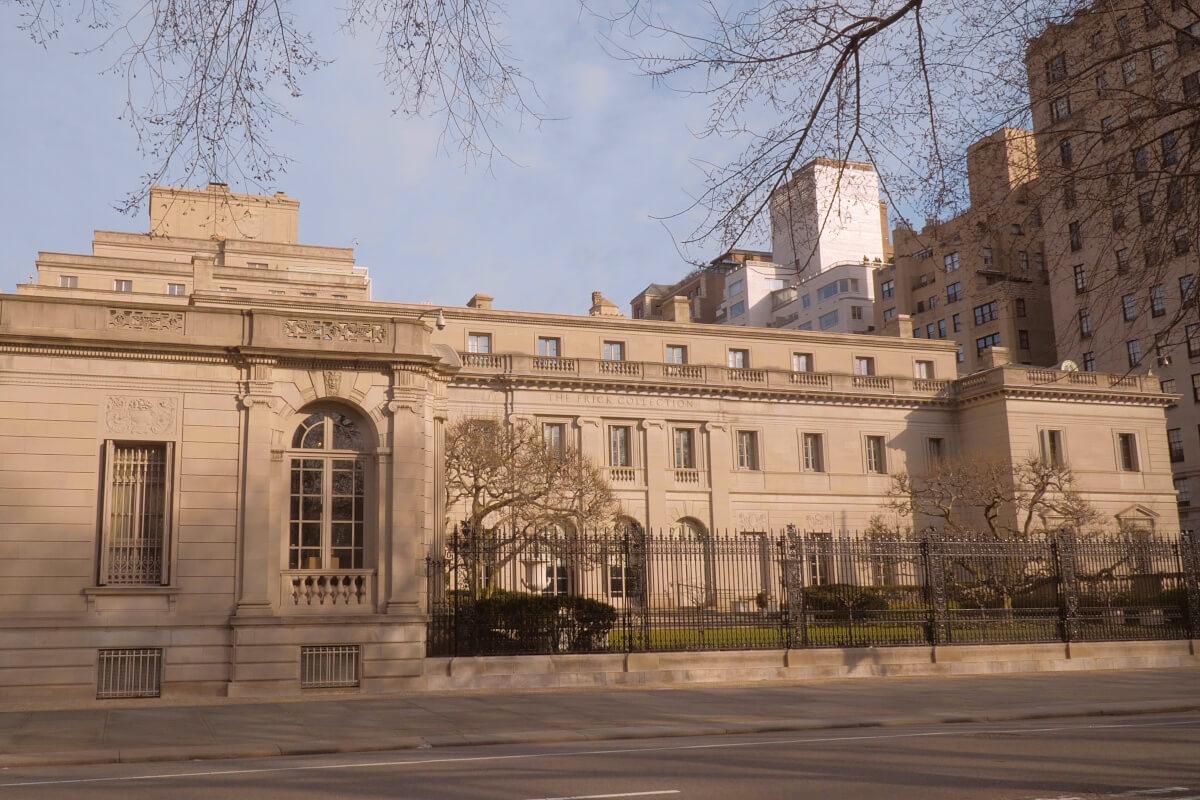
Size: 45,175 square feet
Location: Lenox Hill
Current purpose: The Frick Collection
Henry Clay Frick was a steel and coal magnate who climbed to the top of the Industrial Revolution in just 10 years. He was a controversial figure of the Gilded Age due to his involvement in the Homestead Strike, a labor dispute between the Carnegie Steel Company and its workers. Although Andrew Carnegie owned the steel company, Frick was in charge of its operations while Carnegie was in Scotland. Frick’s attempt to break the contract between the labor union and Carnegie Steel led to a bloody confrontation and, later, an assassination attempt on Frick.
Frick’s Fifth Avenue mansion was completed in 1914 and cost almost $5 million. With 45,000 square feet across three stories, Frick had plenty of space to display his extensive art collection. When he died in 1919, Frick left his house and everything in it to become a gallery called The Frick Collection. The Frick Collection has been open to the public since 1935.
Sinclair-Fletcher House
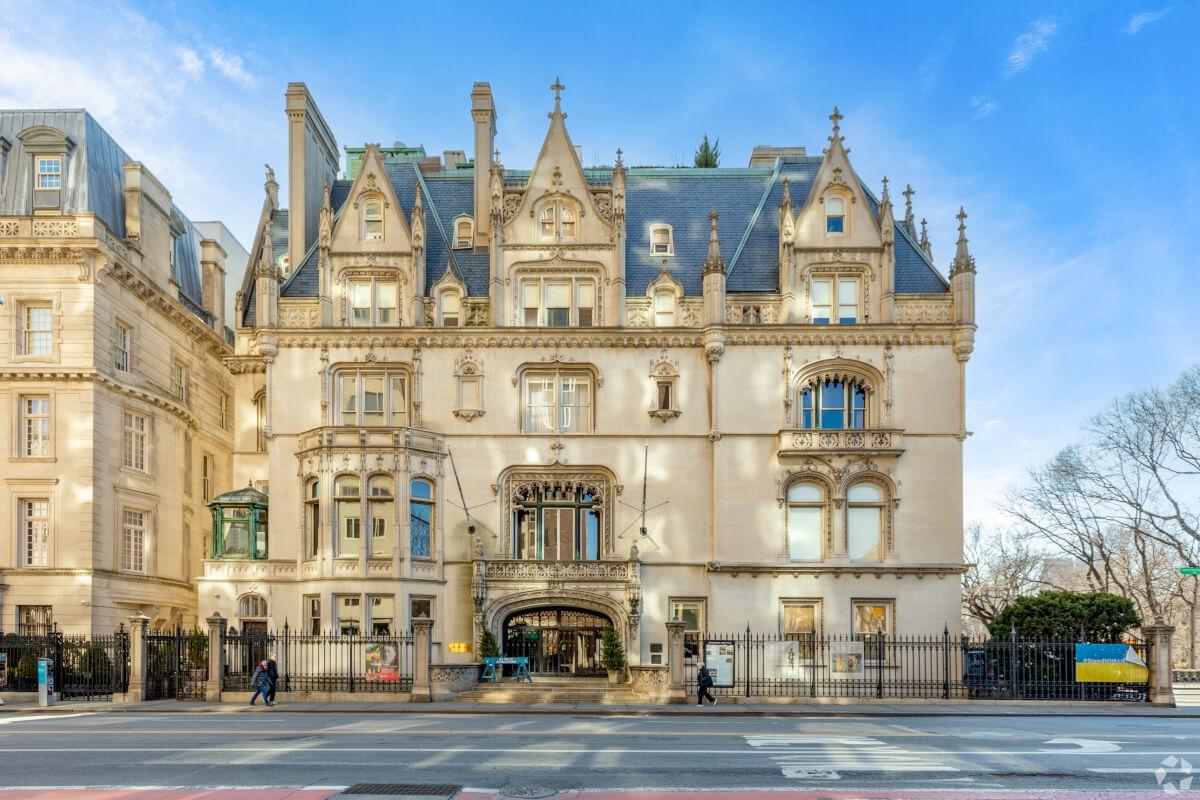
Size: 20,000 square feet
Location: Upper East Side
Current purpose: Ukrainian Institute of America
Isaac D. Fletcher, a businessman and art collector, commissioned a mansion from C.P.H. Gilbert. This five-story limestone chateau sits on the corner of Fifth Avenue and East 79th Street and was completed in 1899.
Like many mansions in NYC, Isaac D. Fletcher’s house changed hands multiple times. When Fletcher died in 1917, he left the mansion to the Metropolitan Museum of Art. The museum then sold the house to oil tycoon Harry F. Sinclair in 1918, who lived there until 1930, when he sold it to Augustus and Anne van Horne Stuyvesant, the last direct descendants of New Netherlands governor Peter Stuyvesant. In 1955, the Ukrainian Institute of America acquired the building and has used it to promote Ukrainian culture ever since.
Schinasi Mansion
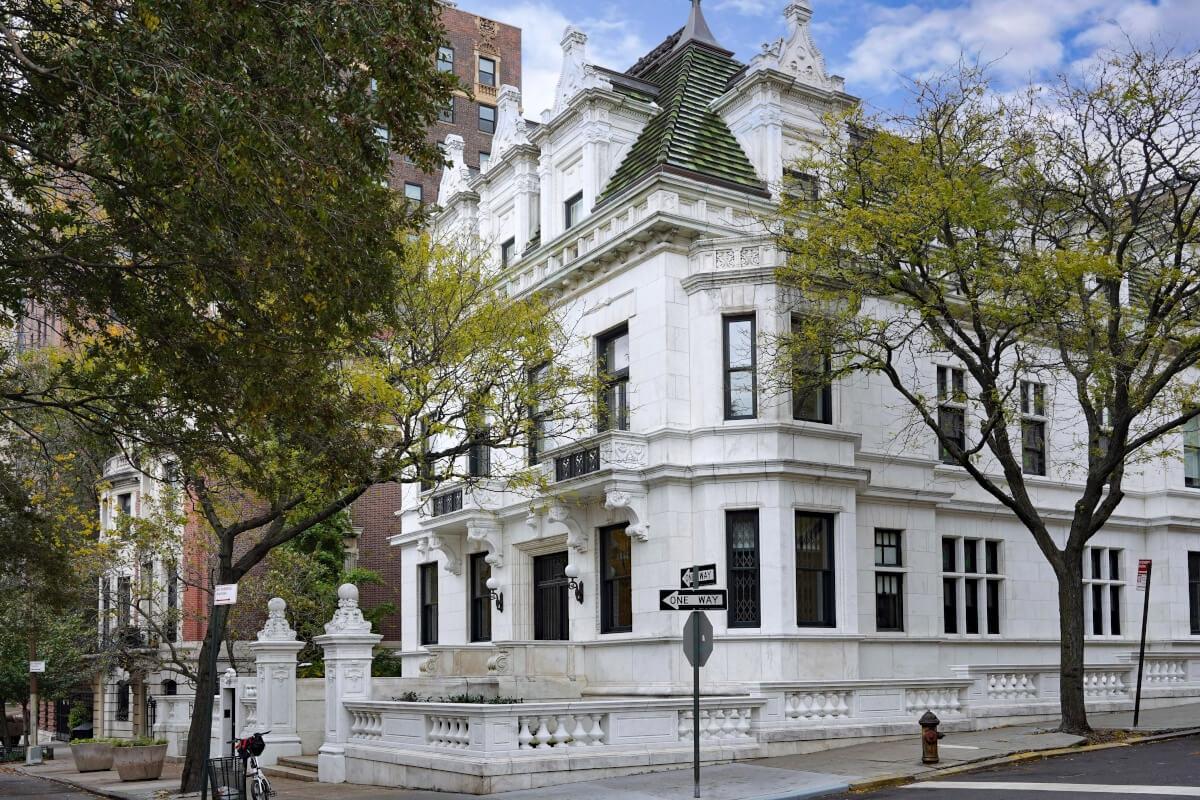
Size: 12,000 square feet
Location: Upper West Side
Current purpose: Private residence
In 1909, Carnegie Hall architect William Tuthill finished constructing this four-story marble mansion for Morris Schinasi, a Sephardic Jewish tobacco baron. This French Renaissance home has 12 bedrooms, eight bathrooms, five kitchens, multiple fireplaces, and a library.
Schinasi Mansion is New York City’s last free-standing mansion used as a residence. In 2013, now-retired Goldman Sachs exec Mark Schwartz bought the mansion for $14 million.
Morris-Jumel Mansion
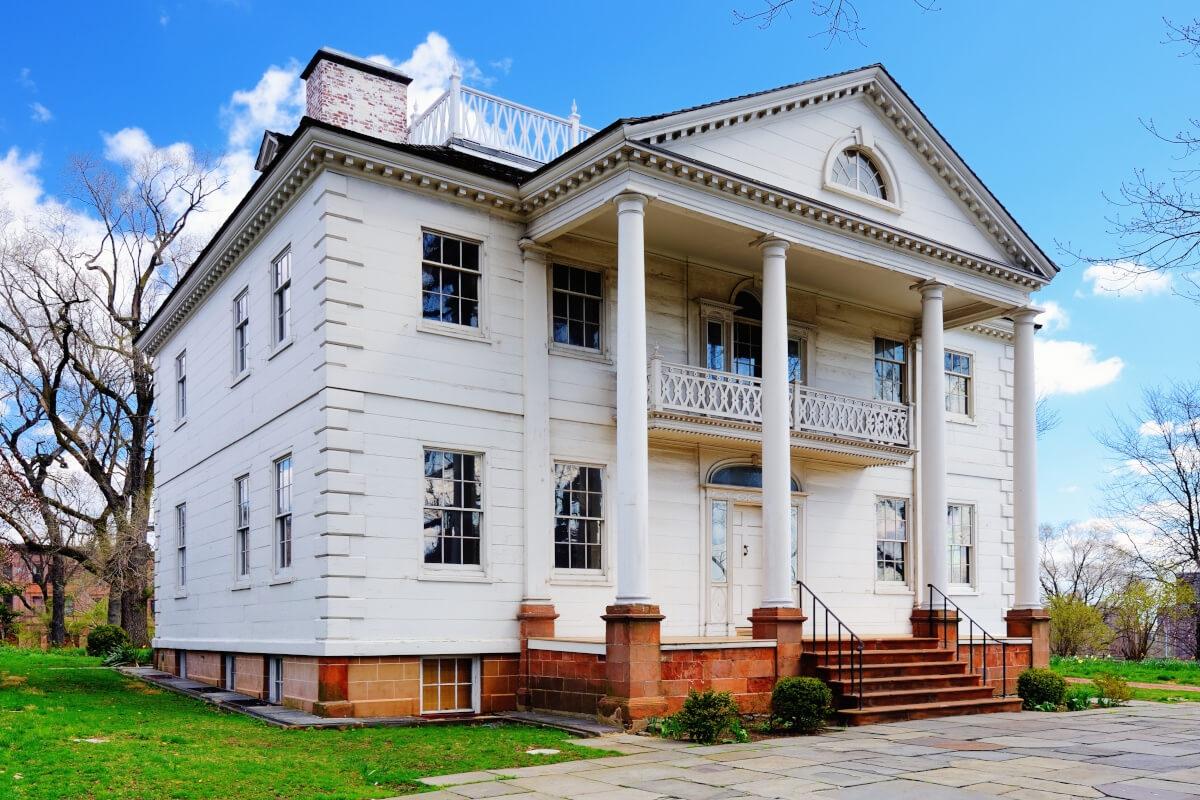
Size: 8,000 square feet
Location: Washington Heights
Current purpose: Morris-Jumel Mansion Museum
Just across the Harlem River from Yankee Stadium, this home was built in 1765 for Roger and Mary Morris, making it one of the United States’ oldest house museums. Roger Morris, a retired British Army officer, returned to Great Britain during the American Revolution, and the Morris mansion was seized by the Continental Army. In 1810, Stephen and Eliza Jumel purchased the Morris mansion and decorated it with what they claimed were pieces from Napoleon’s personal collection.
The Morris-Jumel Mansion became a museum in 1904 and was listed in the National Register of Historic Places in 1966, 201 years after it was built.
Honorable mention: Charles M. Schwab House

Size: 50,000 square feet
Location: Upper West Side
Current purpose: Demolished
Not to be confused with Charles R. Schwab, the founder and CEO of the financial services company, Charles M. Schwab was one of the pioneers of the early steel industry in the U.S. In 1902, he commissioned this house, affectionately called “Riverside,” in the Upper West Side for a total cost of $6 million.
A few poor investments and the most notable recession in American history later, Schwab could no longer afford to upkeep his lavish lifestyle. He left Riverside to the city government and moved into an apartment on Park Avenue. While this Beaux-Arts chateau was demolished in 1948 and replaced with an apartment building, it was one of the most impressive mansions of its time.
Find Your Estate
While mansion residences are hard to come by in New York City, residents can still enjoy the Gilded Age architecture at these mansions-turned-museums. If you’re enamored with older architecture, explore pre-war rentals in New York City or walk-up apartments on the city’s historic streets.
Wherever you are and wherever you’re going, the options are endless with Apartments.com.


